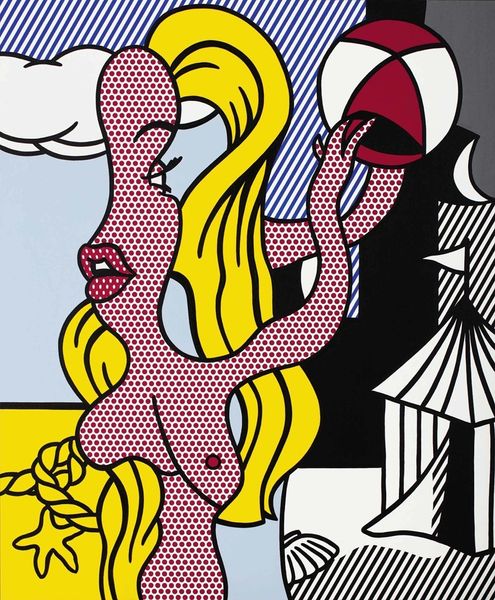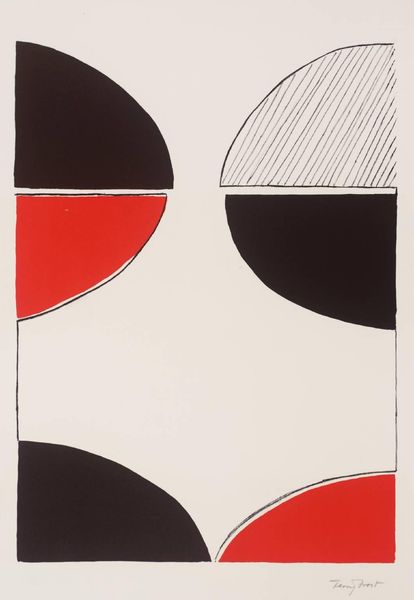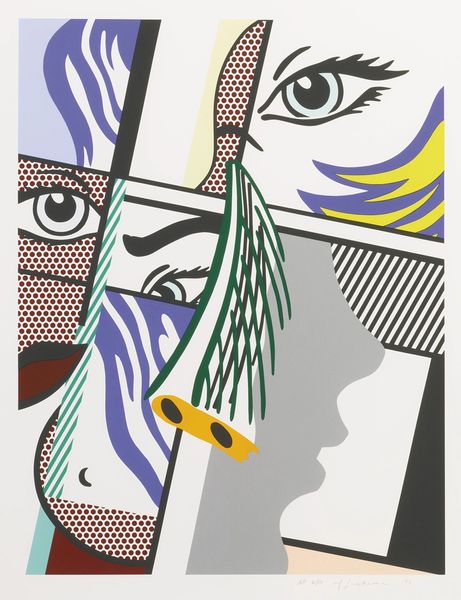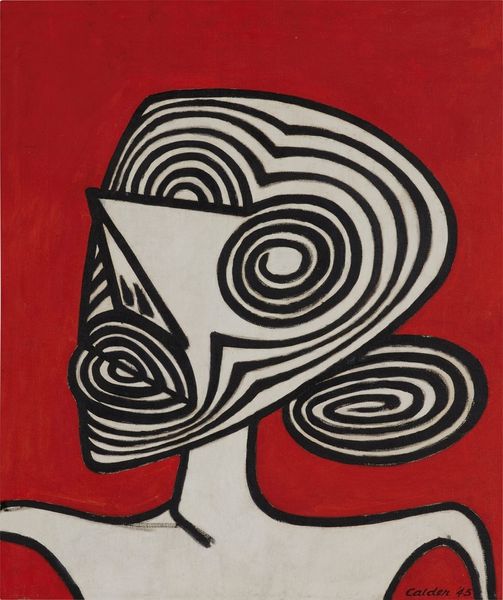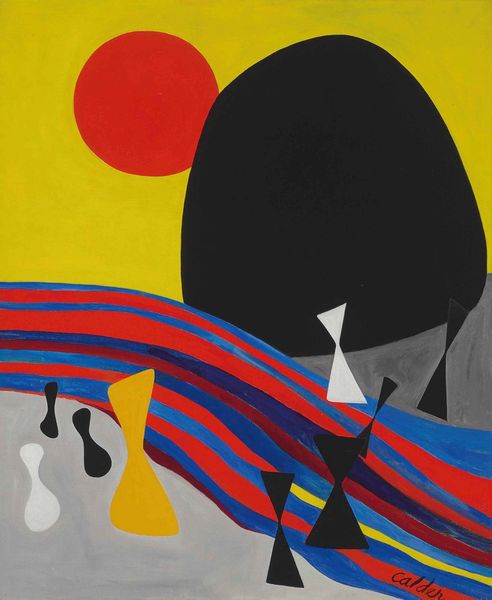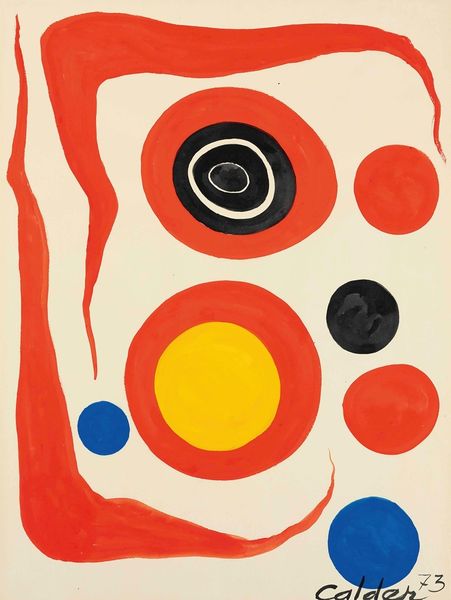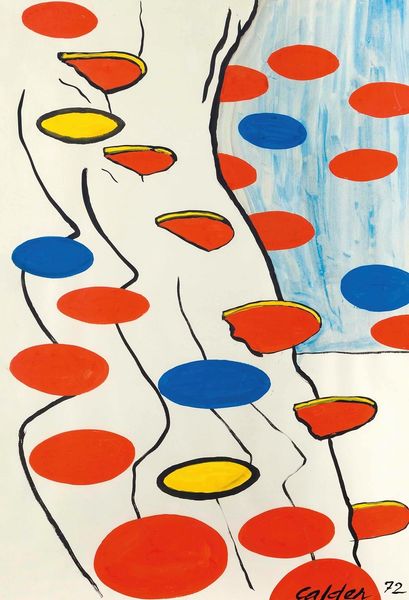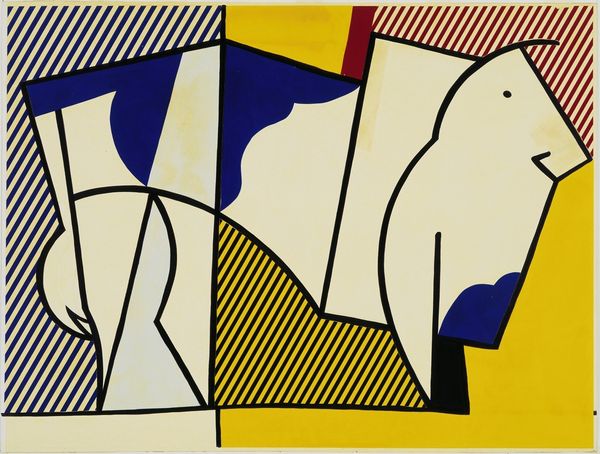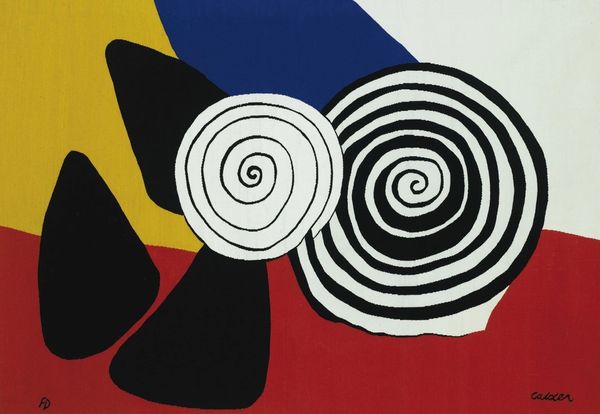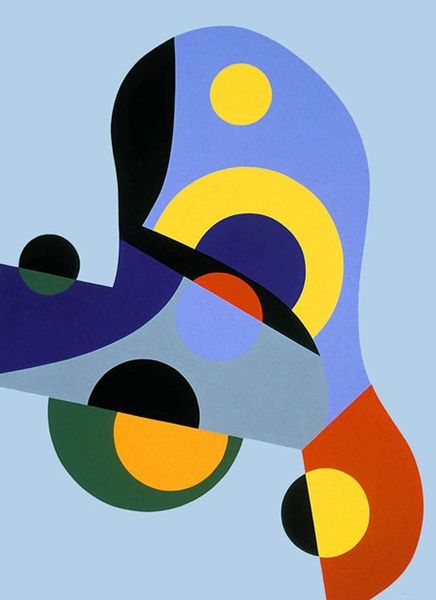
Copyright: Modern Artists: Artvee
Editor: Here we have Roy Lichtenstein's "Female Figure" from 1978, crafted with acrylic paint. It's hard to miss those bold lines and the Ben-Day dots. I'm immediately struck by how flattened and almost industrial the form feels. What catches your eye in this work? Curator: Immediately, I'm drawn to the process Lichtenstein employed. Acrylic paint, known for its quick drying time and versatility, allowed for those crisp, clean lines and the replication of commercial printing techniques on a grand scale. Notice how he meticulously mimics the Ben-Day dots. What do these mechanical reproductions, usually associated with mass production and comic books, suggest about the production and consumption of images of women? Editor: It’s like he's turning the female form into a manufactured product. Was he critiquing that? Curator: Perhaps. Consider also the broader context of Pop Art. It emerged during a period of immense consumerism, mass media, and the blurring lines between high and low culture. Lichtenstein forces us to confront the material reality of art-making, breaking down the myth of the artist's hand. Do you see the labor involved in painstakingly recreating these mass-produced techniques by hand? It's a fascinating commentary on artistic value, isn’t it? Editor: Absolutely. Now I see it less as a straightforward portrait and more as an exploration of how images are made, consumed, and valued in a capitalist society. Curator: Precisely. And by using such seemingly mundane materials and processes, Lichtenstein challenges the traditional hierarchy within art itself. It really prompts a consideration of how an artwork’s value is constructed, and who controls those narratives. Editor: That's such a useful framework. It really helps unpack the complexities of something that looks, at first glance, almost simplistic. Thanks!
Comments
No comments
Be the first to comment and join the conversation on the ultimate creative platform.
